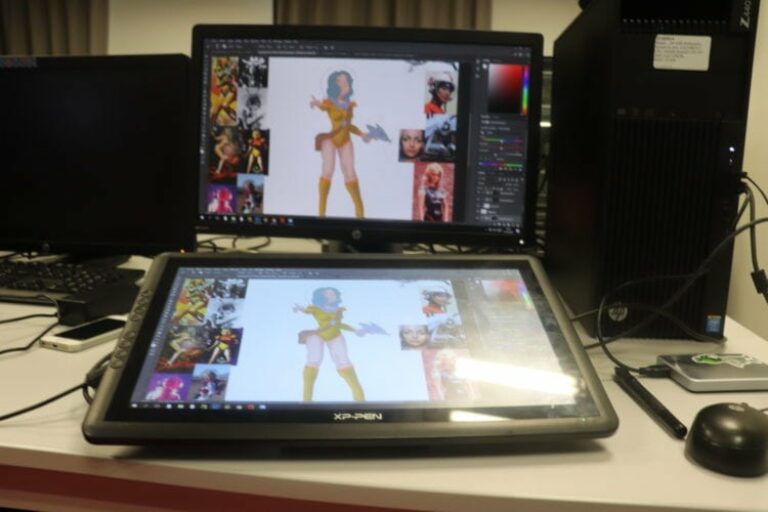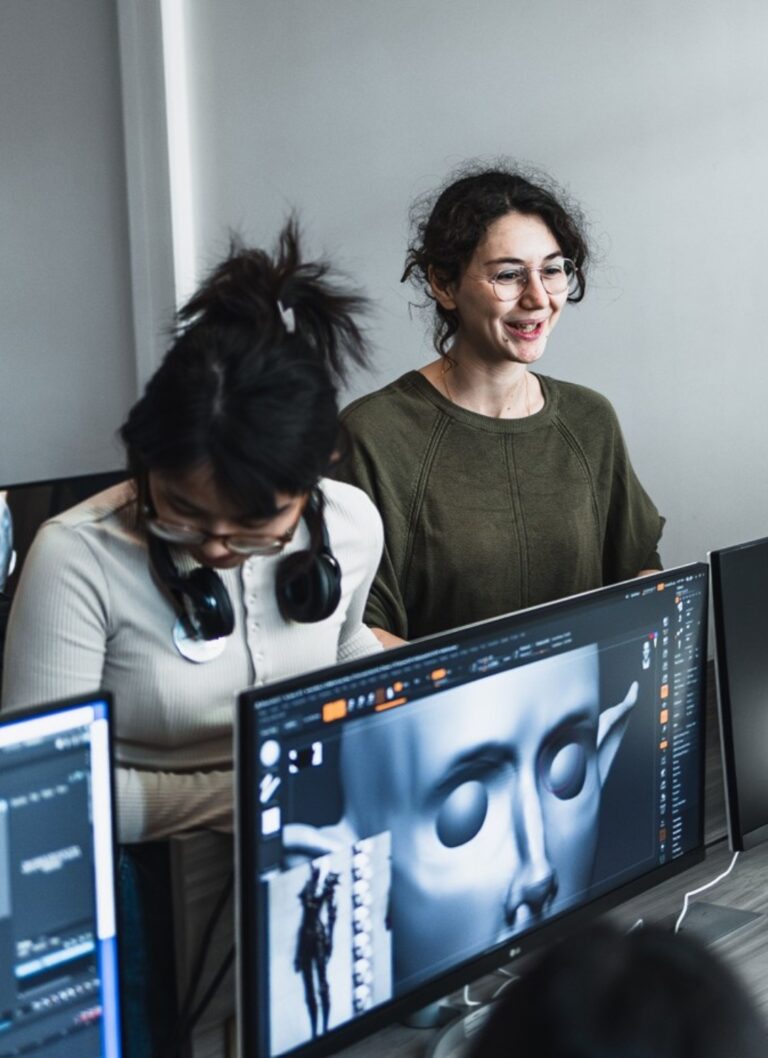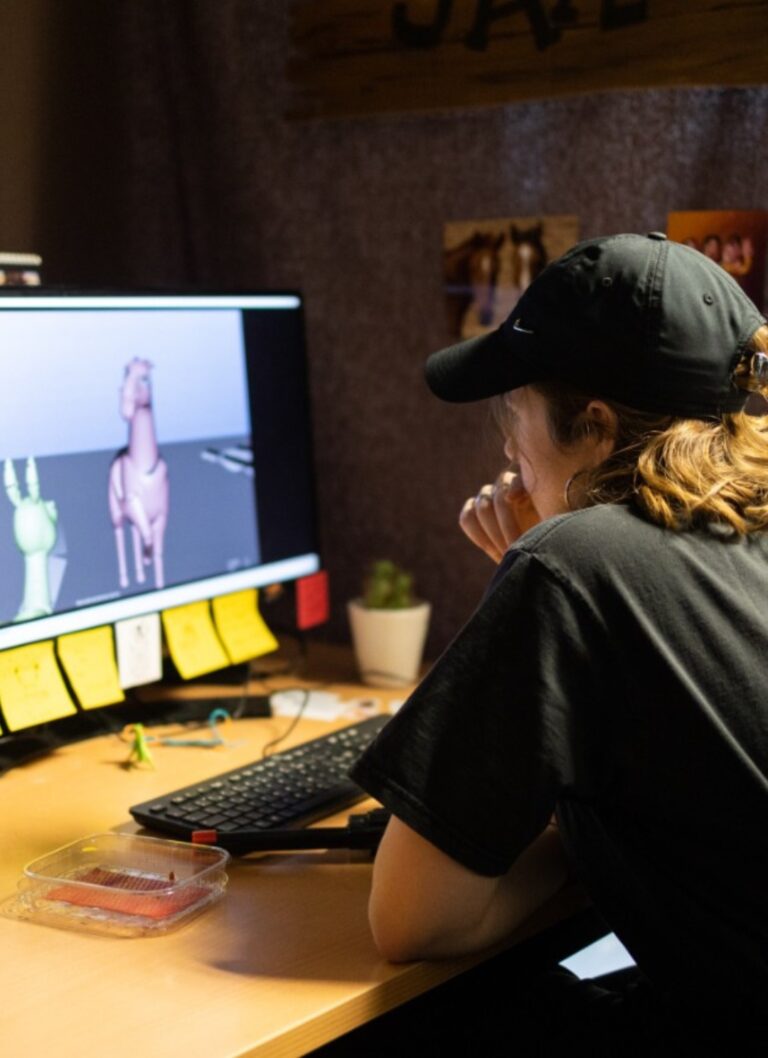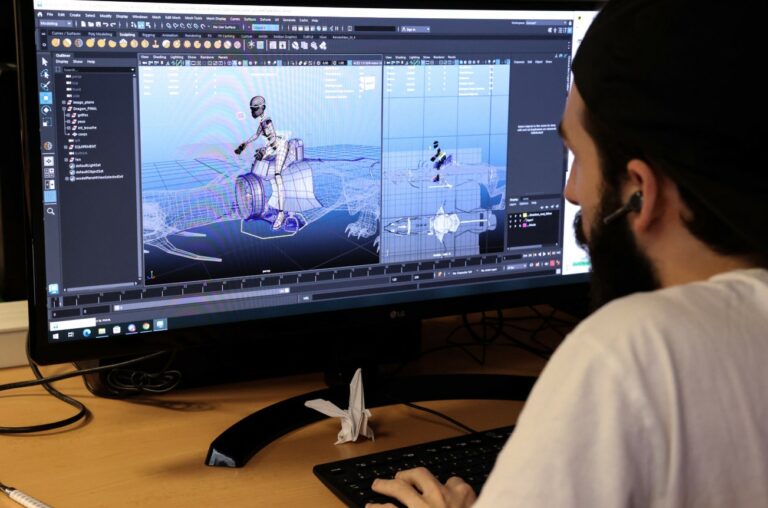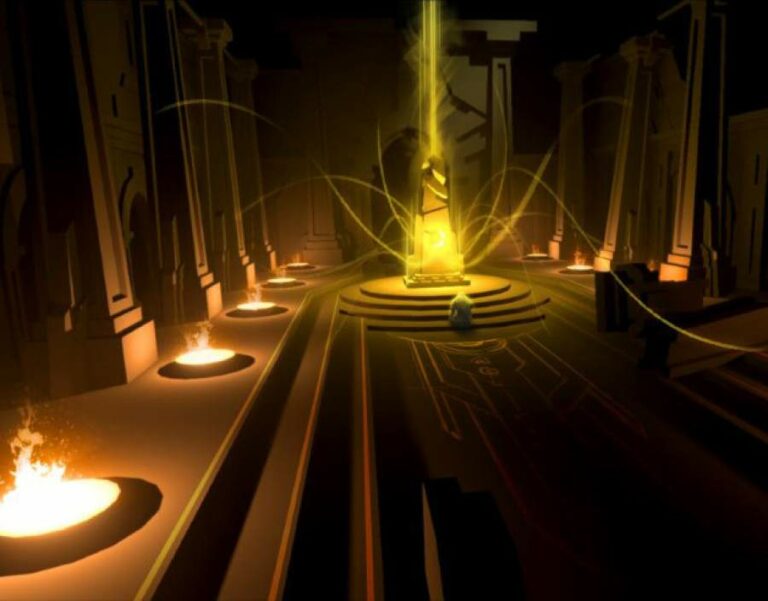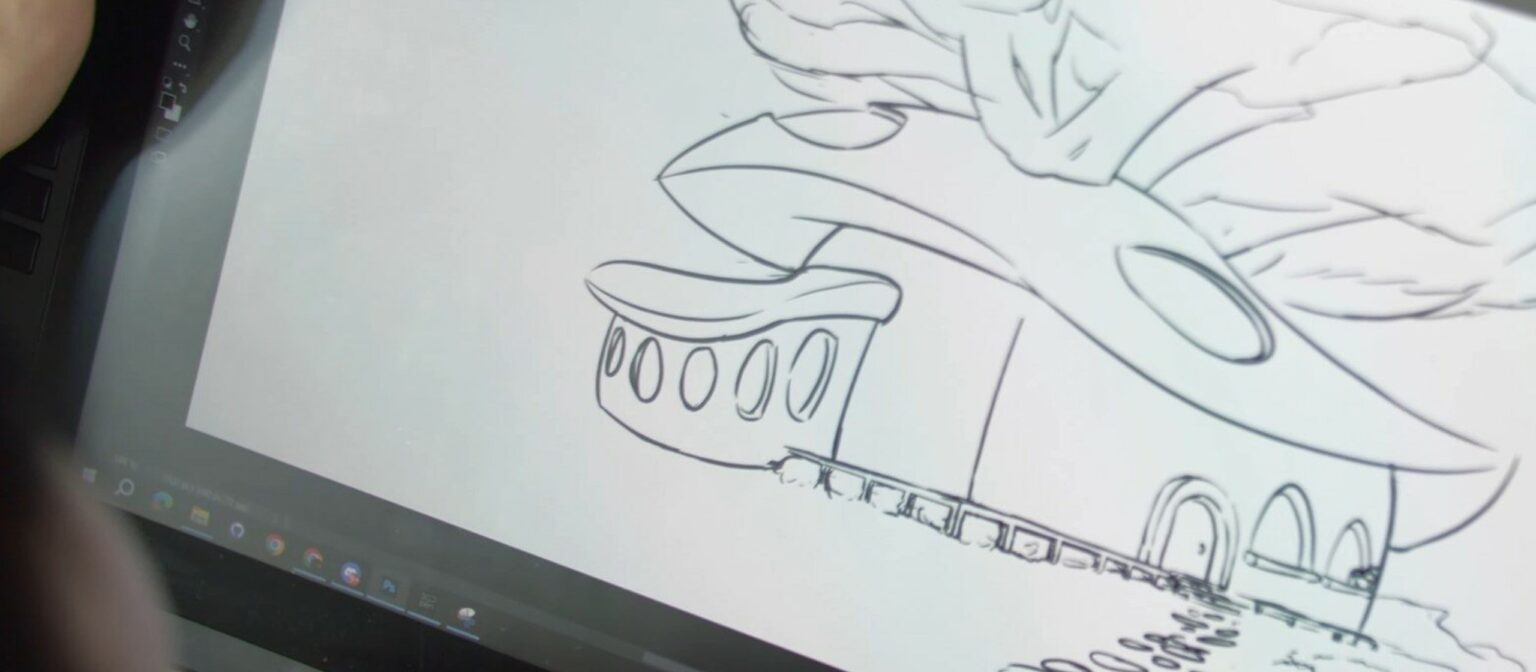
- Training 3D Animation & FX
Do you dream of bringing imaginary worlds to life, designing innovative objects or creating charismatic characters? The profession of 3D designer, combining technological innovation and artistic creativity, offers exciting prospects in a wide range of sectors. Whether for animated films, video games, architecture, advertising or industry, 3D designers are key players in visual creation today. Find out more about the day-to-day tasks of a 3D designer, the skills required, the training courses available, as well as the salary prospects and career opportunities open to those wishing to enter this profession.
Tasks and roles of a 3D designer
As their title suggests, 3D designers are part of the pre-production teams for a given project, be it a video game, animated film, commercial project or product design. 3D designers can be found in these creative sectors as well as in the automotive and aeronautical industries, and in the health, marketing and advertising sectors. The career opportunities open to them are numerous, and their expertise is crucial to a wide range of sectors. Their job is to understand their client’s requirements and to convey them as effectively as possible – often in accordance with detailed specifications – so as to provide their teams with a solid basis from which to bring their designs to life.
Unlike the 3D modeller, the 3D designer collaborates in the design process, which consists of conceiving projects on the basis of plans, ideas, documentation, sketches and drawings, and translating them into a universe intended to be translated into three dimensions.
3D modellers, on the other hand, focus more on building visual models. A designer helps a modeller by providing a framework and creative ideas on how to shape a project. The modeler then finalises the creation, transforming these ideas and drawings into real models, which can then be made available to 3D animators, in the case of an animated film or video game production, or passed on to production units, in the case of a product.
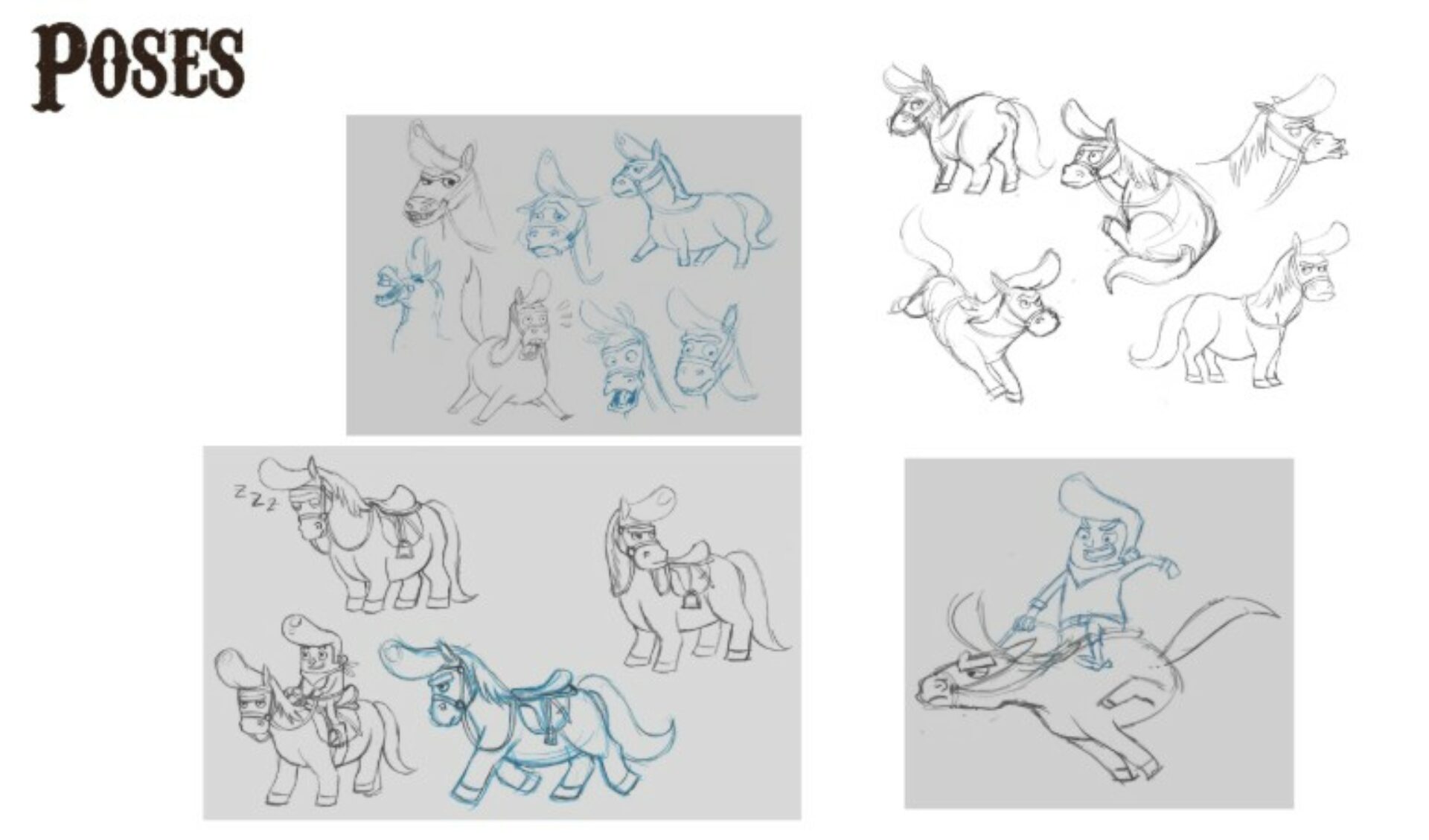
Skills and qualities required to be a 3D designer
Rigour, efficiency and the ability to work both independently and as part of a team are essential qualities for establishing yourself as a 3D designer, regardless of the sector in which you wish to work.
Studios, companies, and agencies that employ 3D designers today also expect them to have both technical and artistic skills. 3D designers must also be flexible and able to adapt to new situations and tools, while remaining curious and attentive to innovations, in order to ensure perfect mastery of the latest technologies in 3D design.
Tools and software used by 3D designers
There are many tools and software programs available, and 3D designers will find it easier to enter the job market if they have in-depth knowledge of them.
These include:
- Maya and 3ds Max are very popular among animation and video game studios.
- Fusion 360 is used in the industrial sector, as is Rhinoceros.
- When it comes to 3D sculpting, particularly for character designers, ZBrush is a must-have.
- In architecture, SketchUp and AutoCAD (also used for technical drawing in both 2D and 3D) are tools that are important to master.
- Finally, Blender is also positioned as a powerful 3D design, modeling, and animation software, as demonstrated by recent productions such as Flow. It has the great advantage of being free.
Which high school diploma should you choose?
A ST2A diploma in Design and Applied Arts Sciences and Technologies is the most obvious path for those who wish to pursue a career as a 3D designer.
Training and degrees to become a 3D designer
Enrolling in a school specializing in 3D animation is a real plus for anyone wishing to pursue a career as a 3D designer. Whether specializing as a set designer, character designer, props designer, or in any other department, 3D designers will be more effective if they master the specifics of 3D modeling and 3D animation. This will enable them to integrate more easily into the workflows of the companies they work with, making it easier to find numerous job opportunities as soon as they complete their training.

What is the salary of a 3D designer?
Average starting salary
Upon graduation, a junior 3D designer earns between €25,000 and €30,000 gross per year. This obviously varies depending on the sector in which they work, and salary differences can be significant. 3D designers can also choose to work as freelancers, with all the advantages and disadvantages that this entails in terms of freedom and instability. One thing is certain: having a good network will enable young 3D designers—especially if they choose to work as freelancers—to quickly build their careers and gain experience.
Average salary for experienced designers
Varying between $40,000 and $60,000 gross per year, the average salary of an experienced 3D designer also depends on their preferred sector and the experience they have gained during their career. As they build their career, 3D designers may also be able to move into project management roles and enjoy a range of benefits, depending on the company they work for.
Career opportunities
The profession of 3D designer offers many career opportunities, depending on the sector targeted. Those choosing this profession will have the opportunity to work in collaboration with various animation, video game, and film studios, as well as marketing agencies, etc. 3D design is present at many levels, and studying can also be an opportunity for aspiring 3D designers to discover the sector in which they wish to work.
Sectors and companies that are hiring
3D is everywhere today, and this translates into a wide range of career opportunities for 3D designers. Companies and sectors that are recruiting include animated film and special effects, video games, architecture, aeronautics, manufacturing and automotive, and healthcare, where 3D is playing an increasingly important role.
Which school should you choose to become a 3D designer?
A 3D animation and special effects school is the ideal training path to become a 3D designer. These courses, which combine technical and artistic aspects, are a real springboard for those who wish to choose this career path. It is also an opportunity—through internships and numerous encounters with professionals—to create and develop a network, which is a valuable asset when entering the job market.
In conclusion, a career as a 3D designer opens up opportunities in a variety of sectors. In addition to your interest in this field, we therefore advise you to think about the type of position and company you are looking for as you progress through your training. This will help you refine your goals and move more quickly into the career path that suits you best.
